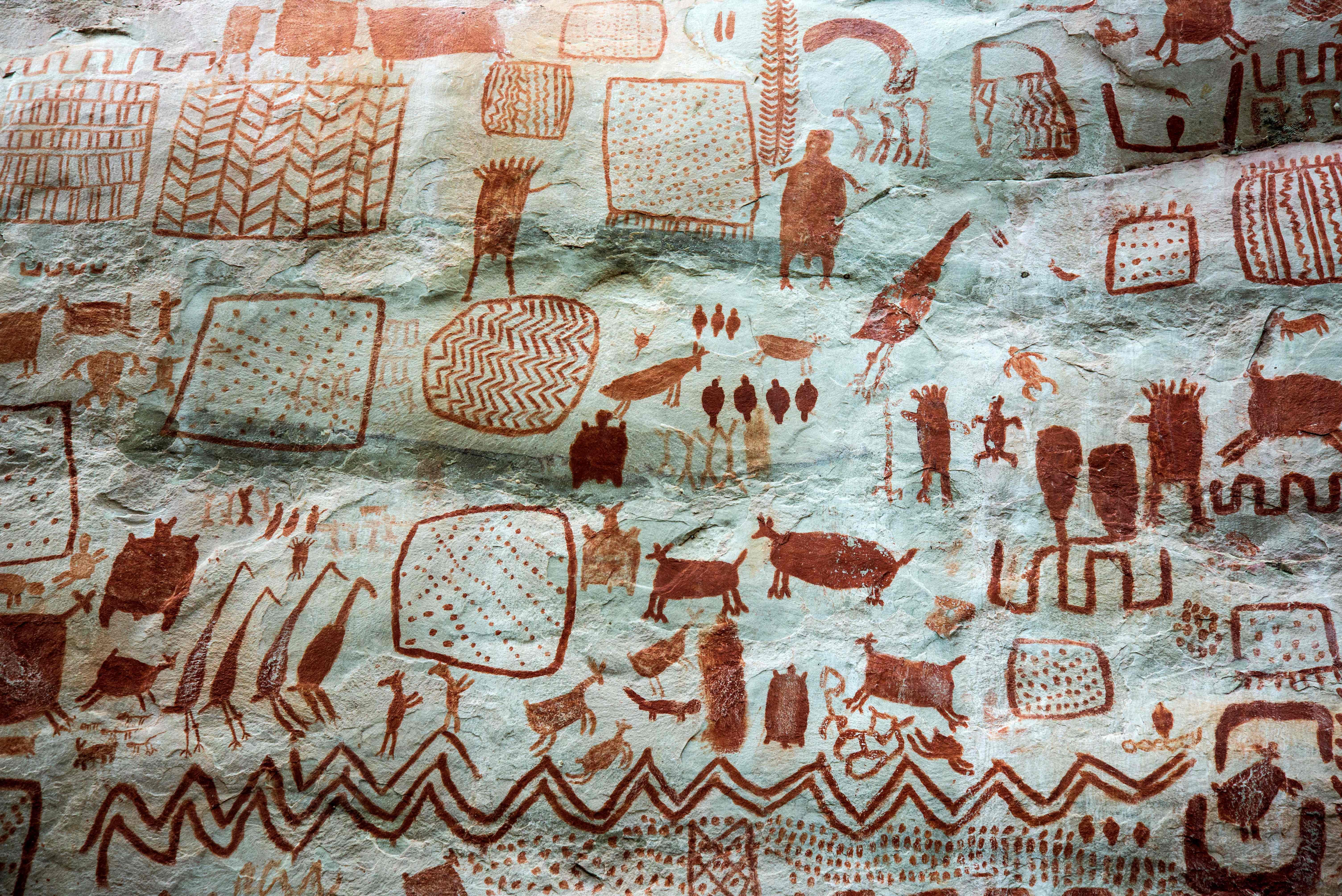When Claims of 'Discoveries' in the Amazon Ring False
When news broke worldwide of an incredible find in Colombia, local experts and guides say their knowledge was misrepresented
Santiago Flórez
July 22, 2021

All members of the community interviewed for this story say the indigenous groups of the region have always known about the murals and recognize them as part of their cultural heritage. DIANA SANCHEZ/AFP via Getty Images
In the Colombian Amazon rainforest tucked in towering table-top mountains known as Tepuis, thousands of pictographs can be found in large-scale murals. The paintings are located in Guaviare, a southeastern region of Colombia where the Amazon rainforest meets the plains of Colombia and Venezuela. Two locations there have confirmed rock paintings in this area: the Serranía de La Lindosa and Chiribiquete National Park. Together, they comprise the biggest collection of rock paintings in the Americas, and they have extraordinary archeological and cultural value.
About a year ago, in April 2020, a group of Colombian and English researchers led by Gaspar Morcote-Ríos of the National University of Colombia published an article in the peer-reviewed journal Quaternary International, presenting the results of their archaeological research in Serranía de La Lindosa, a rock formation located 40 minutes from the city of San José de Guaviare. The team collected human and animal remains, charred seeds, and ochre fragments, the material used in the paintings. Using carbon-14 dating on some of the seeds, they were able to determine that the site was first settled between 11,800 and 12,600 years ago. Some of the pictographs located near their excavation site may even show depictions of extinct megafauna, the researchers hypothesized.
But later that year, the British television show “Jungle Mystery: Lost Kingdoms of the Amazon,” featured the Quaternary International paper and one of its authors as source material and asserted that the rock paintings were a new discovery. In an article from the Guardian about the show, paleoanthropologist Ella Al-Shamah, who hosts the show, claimed, “The new site is so new, they haven’t even given it a name yet.”

Tucked in towering table-top mountains known as Tepuis, thousands of pictographs can be found in large-scale murals. GUILLERMO LEGARIA/AFP via Getty Images
International media, including, admittedly, Smithsonian magazine, repeated the reporting from the Guardian, and many news outlets didn’t mention Colombian research, ignored decades of studies on the subject, and misrepresented the local community.
More:
https://www.smithsonianmag.com/history/when-claims-discoveries-amazon-ring-false-180978250/

